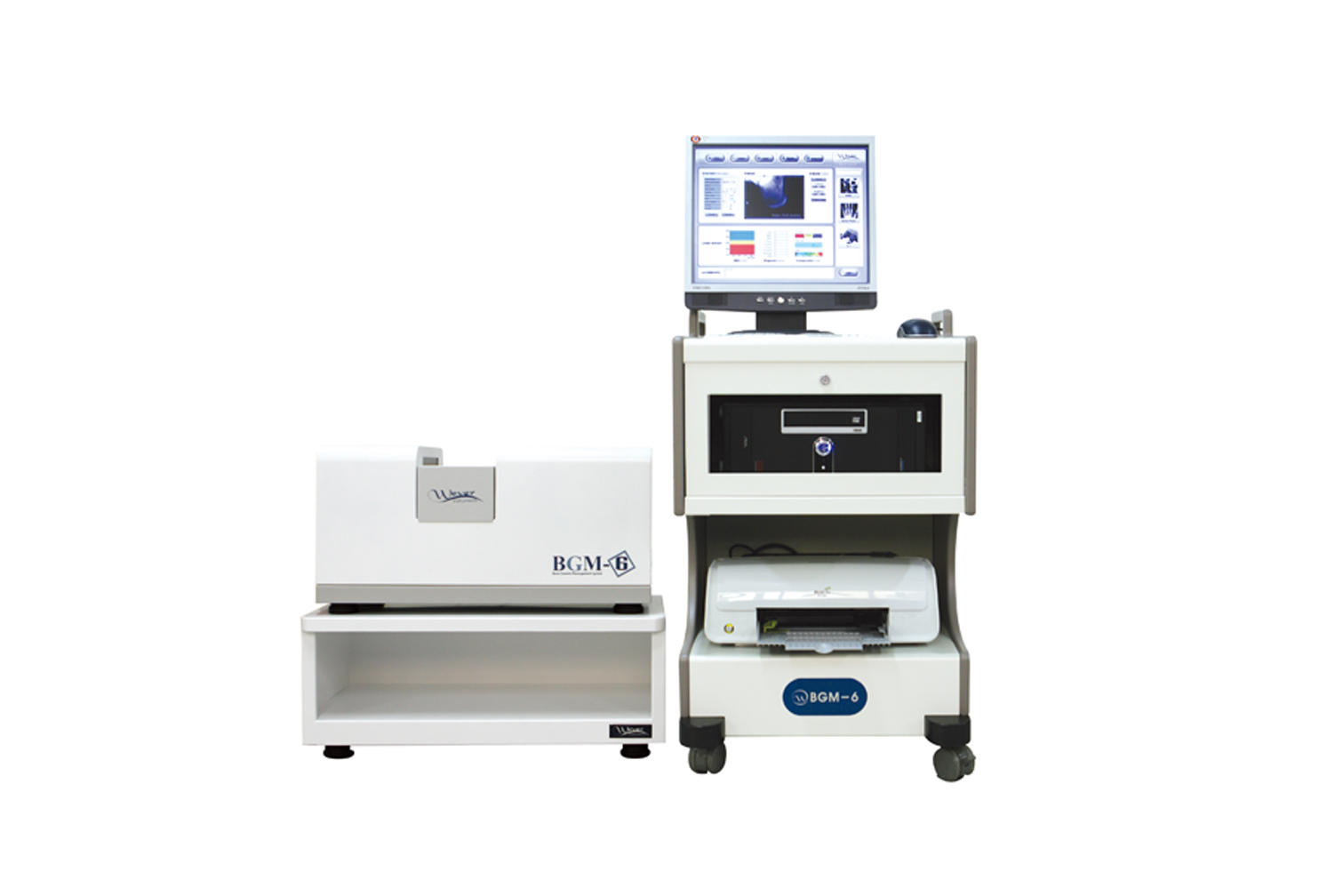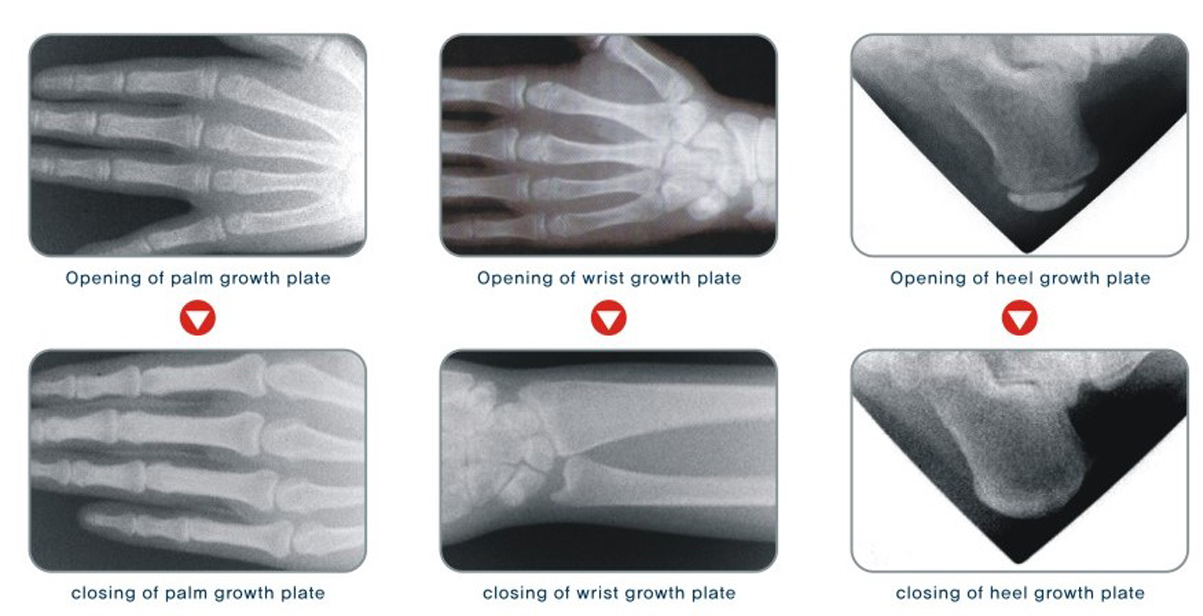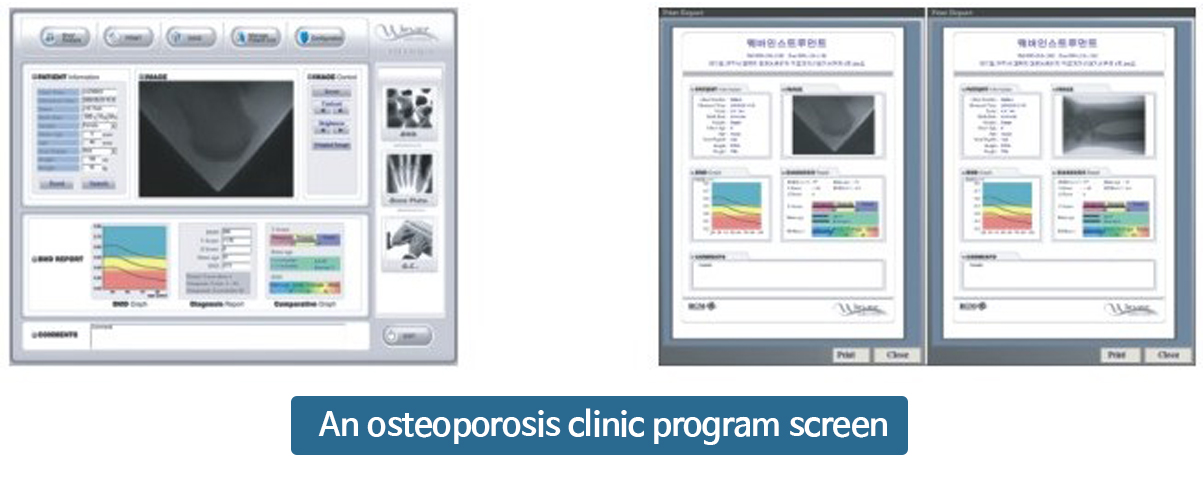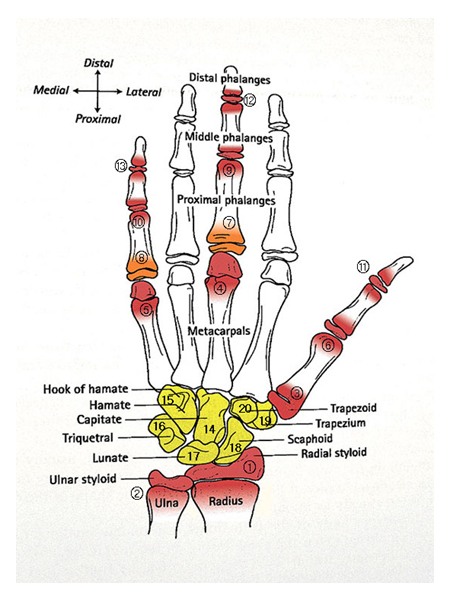WEVERINSTRUMENTS
Thank you very much for visiting our website.
Bone density and growth plate tester BGM-6

This equipment adopts a pDEXA(peripheral Dual Energy X-ray Absorptiometry) method as a bone density measurement method. This equipment provides measurement part images of high resolution and exact measurement data using highly sensitive sensors. This equipment has minimized clinical inaccuracy due to one spot measurement by measuring bone density of forearms and heels. As an additional function, a children's growth examination program is provided to provide actual images, standard reference data, and graphs of growth plates that are surely necessary during operation of growth clinics.
BGM-6 is an abbreviation of Bone Growth Management System up to 6 feet, which is a system to help maintain healthy bones by diagnosing abnormality associated with our bones and managing current growth status.
The TW3 theory is the most authoritative theory in terms of currently existing judgment theories of bone age and prediction theories of adult's height. Three pediatricians such as Tanner, Whitehouse, and Healy have developed this as a method to evaluate skeletal maturity that has more objective and mathematical backgrounds than previously existing various bone age judgment theories(G-PAtlas theory or Bayley and Pinneau theory). And, continuous theory verification and development(TW1→TW2→TW3) have been realized. Besides, many medical doctor's researches in each country(Britain, Japan, North Europe, United States, etc.) in the world for over 12 year period have verified that this system to grade bones can commonly be applicable to all population groups.

1) Providing X-ray images of upgraded resolution (1) Calculation of the length and area of growth plates and bones (2) Internally provided with image magnification and rotation functions 2) Providing a graph to compare height and weight with standard values at the relevant age 3) Measuring children's calcaneus density(mg/cm2) and then indicating it on the graph by age 4) Providing 3 kinds of age concepts that are mentioned in the pediatric growth theory (1) Chronological age : Medical age (2) Height age(50% percentile) : Growth index age in terms of height using statistical data (3) Bone age : Analyzed with 3 kinds of theories ① Calculating bone age with RUS scores among TW3 methods and expressing it with graphs ② Calculating bone age with Carpal scores among TW3 methods and expressing it with graphs ③ Calculating bone age in a G-P Atlas method 5) Internally provided with the MRUS function to minimize errors in the bone age value that can differ depending on readers(lessening the bone age reversal phenomenon due to reading bone age for a short period) 6) Providing prediction index for adult's height by 4 kinds of theories (1) AHP : TW3(RUS score) method of prediction index for adult's height using bone age concepts (2) SHP : Prediction index for adult's height using statistical techniques (3) GHP : Prediction index for adult's genetic height (4) KHP : Prediction index for adult's height using the Khamis-Roche method (simultaneously considering a genetic concept of current growth status) (5) AVG : Indication of the average value of adult's height measured by AHP, SHP, GHP, and KHP 7) Internally provided with a program to predict growth periods : EGP(suspension of growth), EMP(appearance of menarche), EVP(secondary rapid growth period) 8) Providing a graph of comparison with standard values of BMI(fatness index) at the relevant age 9) Follow-up(record control & comparison between pre and post-clinic) expression Expression of results of comparing and analyzing examination contents over many times for a specific patient in order to have progress status of growth clinics compared and judged (1) Graphic expression of changes in bone age and height age pursuant to age (2) Graphic expression of changes in adult's predicted height(AHP, SHP, GHP, KHP, AVG) (3) Expression of patient's growth speed in cm/year (4) Graphic expression of changes in height and weight by age (5) Indication of years when one can grow in the future(i.e., indication of age when growth stops)

1) A bone densitometer of pDEXA(peripheral Dual Energy X-ray Absorptiometry) type (minimizing th effect of skins and muscles on bone density measurement) 2) Providing a X-ray image of actually measured parts 3) Avoiding troublesomeness of dipping your heel in the water or applying gel on it when measuring your heel 4) Minimizing burden of measurement on patients owing to short time taken from measurement to final analysis 5) Excellent reproductivity and accuracy of measured data(within 5%)(within 2% based on phantom) 6) Providing diverse data for selecting and managing treatment objects of osteoporosis (1) BMD(mg/cm2) : Bone density values at the measurement parts (2) BMC(mg/cm), Area(cm2) : An area to obtain bone density, and line density (3) T-Score : Difference from 20 years old adult's bone density value (4) Z-Score : Difference from the same age person's bone density values (5) T-Ratio, Z-Ratio : A number of indicating the T-score/Z-score in percentage (6) Bone Age : Bone age index using BMD value and statistical data (7) BMI(Body Mass Index) : Somatic mass index 7) Providing graphs of BMD(mg/cm2) values by age(judged by comparing the normal values by age with the measured values of patients) 8) Enabling information on existing patients to be searched

- License as a medical device manufacturer (No.2214) - License for medical device manufacturing items (No.05-576) - Suitability certification for quality control criteria of medical devices (No.2006-1751-27) - Program registration (No.2005-01-186-006680) - Practical design registration (No.20-0415744) - Under application for patents - Under application for design
Factors having an effect on pediatric growth include exercises, nutrition, stress, diseases, sleeping troubles, genetic inheritance, etc. Growth speed differs depending on sex and age, but those who correspond to the following cases are recommended to receive a growth diagnosis. - Those who are shorter than the same age persons in height - Those who are shorter than the average value due to slow growth speed - Children who are not short in height but want growth diagnosis, prediction or prescription - Children who seem to stop early in height growth due to fast secondary growth - Children who are worried about genetically low growth due to short height of their parents - Children who are worried about unbalance in nutrition intake or have an unbalanced diet BGM-6 provides you with synthetic information associated with growth of infants or juveniles in growth periods as a result of adult's genetic, statistical and bone-age(TW3 method) prediction height and bone density compared to standard height and weight, etc.

The International Osteoporosis Foundation is recommending that over 65 years old men and women after menopause receive osteoporosis examination. Besides, those who correspond to the following cases or have symptoms are recommended to receive osteoporosis examination. - Women in early menopause or after menopause - Over 60 years old people - Those who are suffering from diabetes meellitus, lumbago, or rheumatoid arthritis - Those who are low in weight or deficient in nutrition intake - Those who have bent back or are lowered in height - Those who have ever had experience of bone fracture even by trivial shocks - Those who are excessive in drinking and smoking - Those who have osteoporosis patients among their family - Those who are complaining of pains in their waist, hip joint, or other parts - Those who are doubted to have osteoporosis BGM-6 is more reliable by providing information associated with more exact bone density in your wrists and heels on the basis of excellent reproductivity and accuracy.

During growth periods, there exist growth plates in all bone joints of our body. However, it is not that growth plates of all parts are utilized for predicting bone age concepts and adult's final height. Namely, growth plates all differ in their appearance time and retrogression time depending on parts of our body. Our hands(palms, wrists) let the pattern changes of growth plates and bones realized best over the entire growth period. Therefore, in the pediatric growth theory, bone age is read by utilizing the pattern changes of hands.(TW method, GP method, BP method, etc.) In case of heels(calcaneuses), it is possible to observe existence of growth plates only between 7~13 years age. Besides, in case of growth plates in the knee, they are well observed during growth periods, but it is impossible to compare changes in growth plates and bones by age, so irrationality follows in applying them to the concept of bone age. Namely, the X-ray images of hands should be utilized in order to perform examination of growth plates(reading bone age, predicting final height, etc.) exactly.




